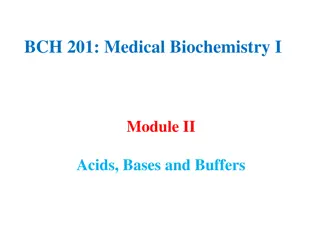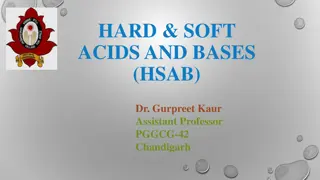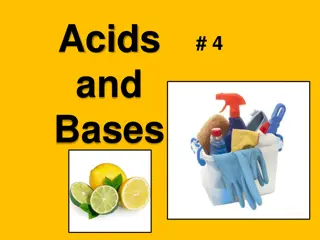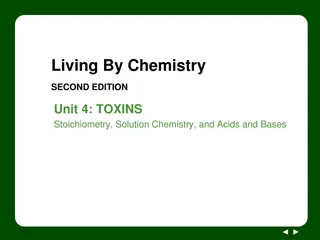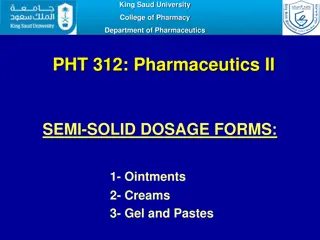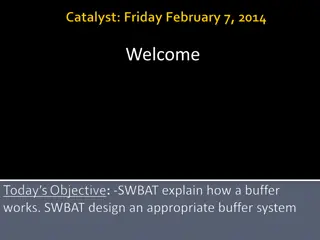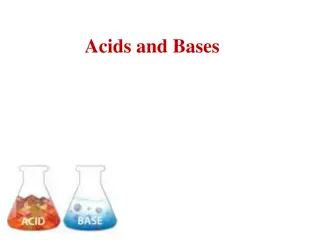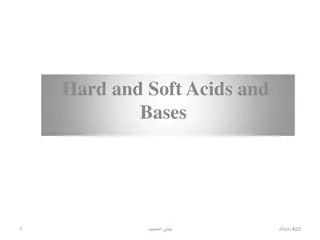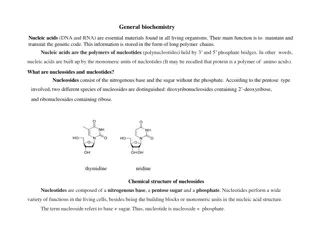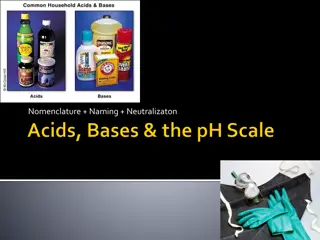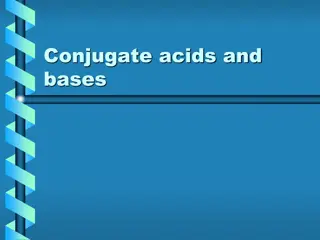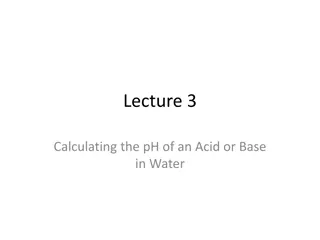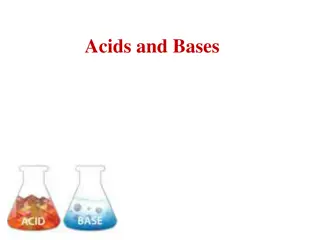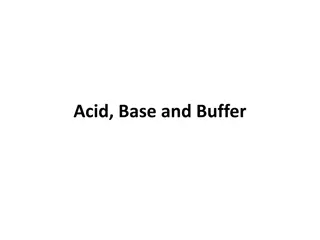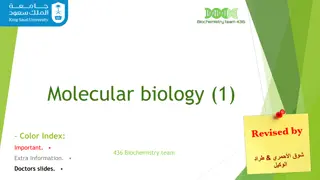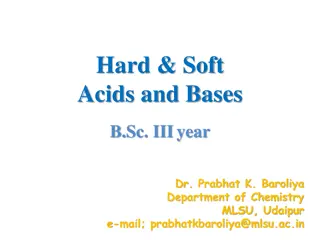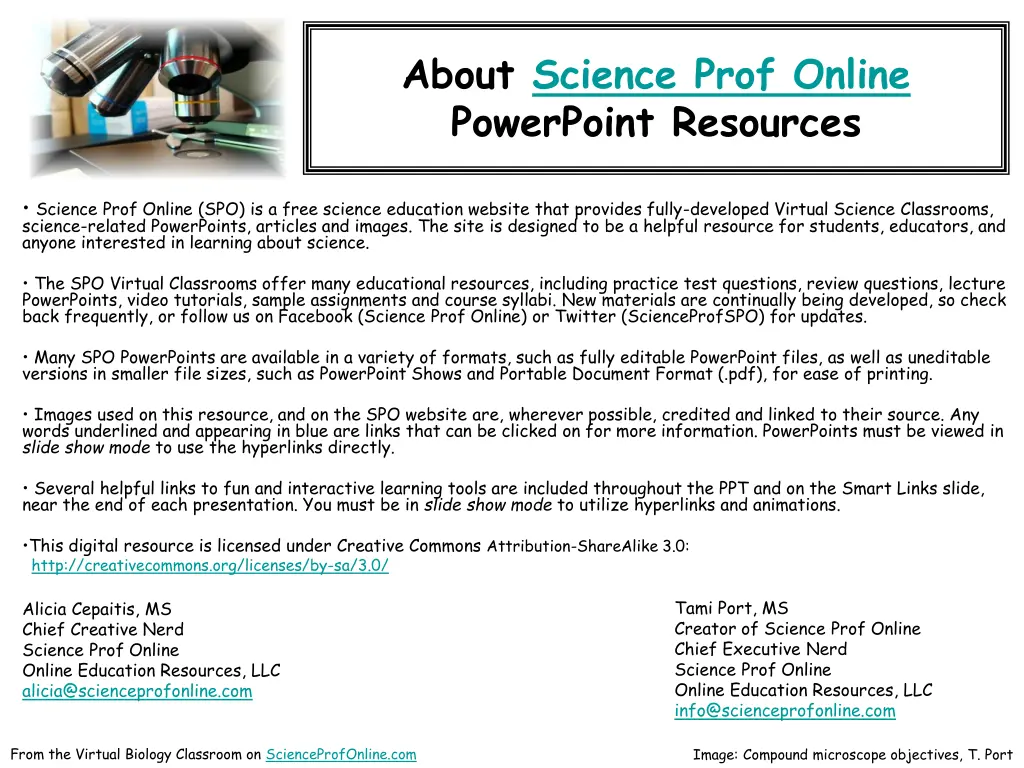
Science Prof Online - Free Science Education Resources
Science Prof Online (SPO) is a free science education website offering Virtual Science Classrooms, science-related PowerPoints, articles, and images. Explore a wide range of educational materials including practice test questions, lecture PowerPoints, and more. Keep checking back for new content and connect with SPO on social media for updates.
Download Presentation

Please find below an Image/Link to download the presentation.
The content on the website is provided AS IS for your information and personal use only. It may not be sold, licensed, or shared on other websites without obtaining consent from the author. If you encounter any issues during the download, it is possible that the publisher has removed the file from their server.
You are allowed to download the files provided on this website for personal or commercial use, subject to the condition that they are used lawfully. All files are the property of their respective owners.
The content on the website is provided AS IS for your information and personal use only. It may not be sold, licensed, or shared on other websites without obtaining consent from the author.
E N D
Presentation Transcript
About Science Prof Online PowerPoint Resources Science Prof Online (SPO) is a free science education website that provides fully-developed Virtual Science Classrooms, science-related PowerPoints, articles and images. The site is designed to be a helpful resource for students, educators, and anyone interested in learning about science. The SPO Virtual Classrooms offer many educational resources, including practice test questions, review questions, lecture PowerPoints, video tutorials, sample assignments and course syllabi. New materials are continually being developed, so check back frequently, or follow us on Facebook (Science Prof Online) or Twitter (ScienceProfSPO) for updates. Many SPO PowerPoints are available in a variety of formats, such as fully editable PowerPoint files, as well as uneditable versions in smaller file sizes, such as PowerPoint Shows and Portable Document Format (.pdf), for ease of printing. Images used on this resource, and on the SPO website are, wherever possible, credited and linked to their source. Any words underlined and appearing in blue are links that can be clicked on for more information. PowerPoints must be viewed in slide show mode to use the hyperlinks directly. Several helpful links to fun and interactive learning tools are included throughout the PPT and on the Smart Links slide, near the end of each presentation. You must be in slide show mode to utilize hyperlinks and animations. This digital resource is licensed under Creative Commons Attribution-ShareAlike 3.0: http://creativecommons.org/licenses/by-sa/3.0/ Tami Port, MS Creator of Science Prof Online Chief Executive Nerd Science Prof Online Online Education Resources, LLC info@scienceprofonline.com Alicia Cepaitis, MS Chief Creative Nerd Science Prof Online Online Education Resources, LLC alicia@scienceprofonline.com From the Virtual Biology Classroom on ScienceProfOnline.com Image: Compound microscope objectives, T. Port
Acids, Bases & Buffers Importance of The pH Scale in Biology From the Virtual Biology Classroom on ScienceProfOnline.com Images: pH scale, Edward Stevens, Wiki
Everyday Science Q: Where is the most acidic area of your body? Q: What would be the purpose of having acidic gastric juices in the stomach? WATCH THIS! Ever wonder how corrosive human stomach acid is? From the Virtual Biology Classroom on ScienceProfOnline.com Images: Human digestive system, Wiki
IonicBonds Involves transfer of electrons between two atoms. Found mainly inorganic compounds. Ion= an atom or group of atoms which have lost or gained one or more electrons, making them negatively or positively charged. Q: What are positively charged ions (+) called? Q: What are negatively charged ions (-) called? From the Virtual Cell Biology Classroom on ScienceProfOnline.com Images: Sodium Chloride, University of Winnepeg
Ionic compounds are made of oppositely charged ions Ionic Bonds are atoms held together by attraction between a (+) and a ( ) ion Compound is neutral overall, but still charged on the inside. Makes solid crystals. From the Virtual Cell Biology Classroom on ScienceProfOnline.com Images: Halit crystal, Crystal structure of NaCl, Wiki
Ions:Acids & Bases An acid is any ionic compound that releases hydrogen _____ (H+) in solution. A base is any ionic compound that releases hydroxide _____ (-OH) in solution. From the Virtual Biology Classroom on ScienceProfOnline.com
Another important characteristic of water Water can form acids and bases Image: Periodic Table of Elements; Water Molecule, Wiki From the Virtual Biology Classroom on ScienceProfOnline.com
Dissociation of Water Hydronium ion + Hydroxyl ion - Neutral water has equal amounts of H+ and OH - Acids: Excess of H+ in aqueous solution Bases: Excess of OH- in aqueous solution Acids & bases neutralize each other. From the Virtual Biology Classroom on ScienceProfOnline.com Images: Dissociation of water, Wiki
Measurements of Acidity & Alkalinity (pH) Acidity of a solution > measured by concentration of hydrogen ions (H+) vs. hydroxyl ions (OH- ). pH ranges: 0 (very acidic) to 14 (very basic). pH scale is logarithmic. Change in just one unit of scale = tenfold change in H+ concentration. If concentration of H+ = OH - neutral. From the Virtual Biology Classroom on ScienceProfOnline.com Images: pH scale, Edward Stevens, Wiki
pH scale is logarithmic Change in just one unit of scale = tenfold change in H+ concentration . Image: pH & hydronium ion concentration, UBC Wiki From the Virtual Biology Classroom on ScienceProfOnline.com
More Examples of pH from Daily Life From the Virtual Biology Classroom on ScienceProfOnline.com Images: pH scale, Wiki
Ions &Acids An acid is any ionic compound that releases hydrogen ions (H+) in solution. Weak acids have a sour taste. Strong acids are highly corrosive (So don t go around taste-testing acids.) Examples: Ascorbic acid(C6H8O6, Vitamin C) Citric acid(C6H8O7, a weak organic acid in citrus fruits) Phosphoric acid(H3PO4, in pop this stuff is also used to remove rust hmmm) From the Virtual Biology Classroom on ScienceProfOnline.com Images: pH scale, Edward Stevens, Wiki
From the Virtual Biology Classroom on ScienceProfOnline.com Images: Strong Acids, Department of Chemistry, CSU
Ions & Bases A base is an ionic compound that releases hydroxyl ions (OH-) in solution. Bases are also called alkaline substances. Some general properties of bases include: Taste: Bitter taste (opposed to sour taste of acids and sweetness of aldehydes and ketones). Touch: Slimy or soapy feel on fingers. Reactivity: Strong bases are caustic on organic matter, react violently with acidic substances. Examples: Sodium hydroxide, NaOH, of lye or caustic soda used in oven cleaners. Magnesium hydroxide, Mg(OH)2, also known as milk of magnesia, a weak base used in antacids and laxatives. From the Virtual Biology Classroom on ScienceProfOnline.com Images: pH scale, Edward Stevens, Wiki
Acid/Base Balance in Biology pH balance is important to homeostasis of organisms. Homeostasis = tendency of the body to maintain a balanced internal environment, even when faced with external changes. Such as the body's ability to maintain an internal temperature around 98.6 degrees F, whatever the temperature outside. Examples: Digestion needs acidic environment (pH 2-3) Urine is slightly acidic Blood must stay in neutral range near 7.35 to 7.45 Acids, Bases & You, and in-depth YouTube video. From the Virtual Biology Classroom on ScienceProfOnline.com Images: pH scale, Edward Stevens, Wiki
Ions &Salts Compounds that dissociate in water and produce cations other than H+ and anions other than OH- are called salts. The most familiar salt is sodium chloride, the principal component of common table salt. Other examples of salts: Baking soda (NaHCO3) Epsom Salts (MgSO4) From the Virtual Biology Classroom on ScienceProfOnline.com
Salts: The Role of Buffers - Certain salts, called buffers, can combine with excess hydrogen (H+) or hydroxide (OH-) ions. - Produce substances less acidic or alkaline. - Act like a chemical sponge to soak up excess acid or base, keep pH constant. - Buffers can be used up . Once used up, no longer help regulate pH. - Buffers are vital to maintaining pH in organisms. Example: Antacids are buffers made of the salt calcium carbonate (CaCo3). From the Virtual Biology Classroom on ScienceProfOnline.com Images: Antacid Tablets, Wiki
Bicarbonate Buffer system is important in maintaining proper blood pH Video: Bicarbonate Buffer System & pH imbalances From the Virtual Biology Classroom on ScienceProfOnline.com Images: Bicarbonate Buffer System, Wiki
REVIEW! Interactive animated lessons on pH: Acids & Bases and Buffers Image: Methane Covalent Bonds, Dynablast; Formation of ionic sodium fluoride, From the Virtual Biology Classroom on ScienceProfOnline.com
We will be testing pH today using a few different tools: Litmus Paper Litmus paper comes in two colors, red or blue. Acidic substances turn blue litmus paper red. Basic (alkaline) substances turn red litmus paper blue. Image: Blue and Red Litmus Paper, Wiki From the Virtual Biology Classroom on ScienceProfOnline.com
We will be testing pH today using a few different tools: Hydrion Paper Hydrion paper is used to to measure pH to the nearest whole number. The dip sticks have colored squares (indicators) that change color in the presence of specific pH ranges. You can determine the pH value to the nearest whole number by matching the colors on the hydrion paper after you dip it into a substance and wait a few seconds. From the Virtual Biology Classroom on ScienceProfOnline.com
We will be testing pH today using a few different tools: pH Meter You will use a pH meter to measure pH to the nearest tenth (0.1). Be sure to calibrate the pH meter in pH 7 buffer solution before you begin to measure any pH. The meter should be rinsed in water after each use and kept in water when not in use. Our pH meters will register to the hundredths place (0.01), but you only need to write down the pH for each substance to the nearest tenths place (0.1). Q: Which of the three pH measuring tools do you think is most accurate? Image: pH meter, Wiki From the Virtual Biology Classroom on ScienceProfOnline.com
Confused? Here are some links to fun resources that further explain Chemistry: Smart Links Acids & Bases Are Everywhere fromChem4Kids website by Rader. Acid & Bases, an Introduction by Vision Learning Acids, Bases & You, and in-depth YouTube video. Buffer System YouTube video. Bicarbonate Buffer System & pH imbalances YouTube video. (You must be in PPT slideshow view to click on links.) From the Virtual Biology Classroom on ScienceProfOnline.com


